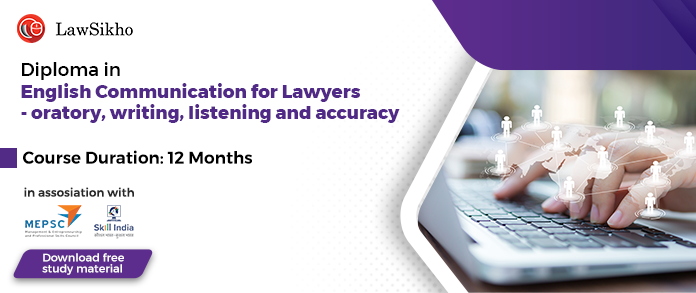This article is written by Ms. Nikara Liesha Fernandez from School of Law, Christ University, Bangalore. This article deals with the various types of export marketing entry strategy and the elements of export marketing mix.
Table of Contents
Introduction
Marketing is one of the most crucial processes for a commercial concern. The market strategy adopted by a firm can either make or break the success of the product. It is only through effective marketing that a manufacturer can hope to gain the due recognition for his/her product in order to make up for the costs involved in producing the product. Additionally, he/she can also garner a significant profit for the same which is indicative that the public or the target market has appreciated his/her product in the right sense and is responding positively towards the same to sustain a continued business venture for the entrepreneur. This facilitates a type of mutual gain for both the manufacturer as well as the individuals of the target market.
Global or international marketing is the process by which an organization decides to take their products beyond domestic markets into the international arena which has many pros but also a significant number of risks as well. Philip Kotler, one of the world’s most famous marketing authors has defined global marketing as being ‘concerned with integrating and standardizing marketing actions across a number of geographic markets.’
The benefits and risks of global marketing
The benefits of global marketing are access to a broader market. This refers to an international population which is not only restricted to the geographical borders of a country. Global markets enable an organization to increase their market share and customer base, providing them with limitless networking opportunities, both in cases of new customers as well as new business partners. This opens the door for future business opportunities and boosts a brand’s reputation, image and credibility. Customers are more likely to prefer a brand that is known internationally as they perceive a certain superiority of it over brands which are limited to domestic boundaries.
On the flipside, global marketing also poses an organization with a high level of risk especially with regard to costs and investments involved, greater competition as the brand enters a market that is not part of its motherland and so cultural, differences, preferences of foreign customers, changes in government rules and regulations and communication difficulties due to language barriers.
Export marketing entry strategy : an insight into the key elements
If making the decision to introduce your products into the global market is not daunting enough, taking a gamble on its eventual success is absolutely nerve-wracking for any such organization. Even if your product does get a lot of attention and recognition in the beginning, sustaining the same over time is challenging in the face of competitors, both domestic and international who are churning out products trying to one-up yours. Though there is no sure-fire way to ensure complete success of your product in the global market, there are some key elements to be kept in mind before making the decision to go global. They are as follows:
(i) Identifying the right potential market
This involves undertaking a rigorous market research into the rules and regulations prevalent in the target foreign country, buying trends of the consumers and their purchasing power as well as similar products to yours which are already prevalent in the foreign market as duplication of products is a guaranteed slump in sales.
(ii) Formulating proper export marketing strategies
These include direct exporting, piggybacking and countertrade to name the essential strategies which shall be further elaborated below.
(iii) Creating good marketing communication tools
Tools that include advertisements of catalogues and price lists that are easily understandable by the target customers, brochures and websites which are easily accessible by the target audience can be employed for this step. Another essential component of creating a good marketing strategy is to ensure that the language of the content is in the same language that is spoken in the foreign country. Retaining your own language which might form a minority language in the foreign country would defeat the process of successfully breaking into the market.
(iv) Adopting a sound promotion policy
This would depend on the findings of the market research done in the initial step and would help determine the level of investment you should put forward for promotional purposes, which media you would choose for the same depending on the size of the advertisement and the date you want your advertisement to be showcased.
The key strategies
Exporting
Exporting essentially means directly selling goods in a country different from the one in which they have been manufactured or produced. This is very famous among small firms who want to get a feel of the foreign markets before they directly establish their firms in the market. It is a low-risk and one of the less costly strategies which make it easier for a product to break into a foreign market. In this strategy, the costs of production are minimized as the raw material and other material costs are that of the home country itself. There is no need for foreign investments in production as well and this is another way the firm can cut back on costs.
The firm is, however, required to put in a lot of effort and investment into their marketing strategies instead. Exporting firms often employ the assistance of agents or contractors in the foreign country who effectively control the marketing of the product and become the face of the brand in the foreign country. This is potentially dangerous as well as the manufacturer has a lack of control over the agent’s actions. The firms also incur heavy costs on the demand of the distributors, transportation costs and tariffs.
Piggybacking
Piggyback marketing is an interesting concept which is successful mainly in the case of unique products or services which are usually distinctive and first-timers in a market. This is another low-cost marketing strategy wherein a mutually beneficial, symbiotic relationship is formed between two firms that deal in complementary but not competitive products who tie up with each other in selling each other’s products. Most often, smaller firms tie up with larger domestic firms who are already involved in exporting their own products and have established their position in international markets as well as have a dedicated customer base.
This way, the smaller firm can minimize both cost and risk as it is essentially the larger firm that is marketing the former’s products internationally, as the smaller firm still continues to sell domestically itself. Thus, through this process, the smaller firms can slowly establish their name in international markets under the wing of the larger exporting firm. Although it is easier to find a larger domestic firm to enter into a piggybacking strategy with, it is also possible, but slightly more challenging for smaller firms to enter into a piggybacking strategy with an international firm itself. The catch with the latter however is that the smaller firm must have a truly exceptional product to offer.
Countertrade
The countertrade strategy can be understood as the modern version of the barter system. In the case of smaller firms, this strategy is only adopted when all other payment methods have been exhausted and there is no other alternative to payment due to the problems regarding lack of currency. In place of currency, therefore, goods and services are exchanged rather than payment. This is very relevant in international trade where structuring a uniform means of payment is challenging due to differences in the currencies of the various markets involved. The advantages of countertrade are that it overcomes liquidity challenges. As there is no physical exchange of cash due to non-availability of the same, it is able to sustain and sometimes even increase sales by overcoming currency barriers and paying through kind, like a barter system instead. This ensures that no market share is lost to the competitors and enhances the goodwill of the company itself thus enhancing customer-supplier relationships.
Examples of elements included in the export marketing mix
An export marketing mix consists of the relationship between the internal and external forces which are related to the marketing of a particular product in an international market. Striking the right balance between these elements to form an effective marketing mix is key to establishing a successful marketing plan.
Product support
Product support involves finding out where you want to source your product from, match your already existing products to the market through good market research to ensure that they are still relevant and so that there is no overlapping between them and the new products you want to launch and finally formulating new products based on appropriate market research. Another important aspect of product support is putting forward the manufacturing specifications in case you yourself are not the manufacturer of the product thus ensuring production control and also putting the product through appropriate quality and safety tests. Next comes the packaging part of the final product which includes processes like labelling and other packaging related processes.
Price support
Like the name suggests, price support involves fixation of prices on the products you intend on putting forth in the market. For this aspect of the product mix, you need to decide whether you want to offer any discounts on the product and distribute and maintain price lists with relation to the same.
Promotional support
Promotional or selling support includes deciding the channels through which you wish to advertise and promote your products, be it through literature, direct mail, exhibitions and trade shows, print media or direct selling. Certain organizations who have their firms spread throughout international markets might choose to employ agents or a sales force through the payment of commissions for the process of promoting their products.
Inventory support
Taking stock of inventory or inventory management is another important aspect of the export marketing mix to prevent collection of surplus products that are likely to get outdated and go to waste. This includes processes related to warehousing, ensuring application of raw materials and parts as well as finding authorised sources of credit.
Distribution support
Distribution support involves those aspects which help in distribution of the finished product to the final consumers. This involves the provisions for access to funds, raising capital from a variety of sources and efficient processing of orders for timely delivery. In case of export, this step also includes getting the required documentation and insurance ready and freight forwarding.
Service support
Service support involves all those processes required for the servicing of the product before and after sales. Processing of quotes for the product, gathering marketing information and intelligence, setting of warranties and guarantees and ensuring follow through action of the same and customer care are essential parts of this section of the marketing mix. Setting up of budgets, data processing systems, tax and legal services in case of any disputes with translation facilities as well as the making of sales reports and catalogues are also components of this part of the mix.
Financial support
Financial support is rendered in the form of billing and collecting invoices, means of hire and rentals and auditing. Planning the distribution of finances by the organization and scheduling of the data allocated in the budget to ensure financial soundness are also important components of the financial support component of the export marketing mix.
One method of financial support is through direct investment. This is mostly taken on by multinational organizations who choose to directly invest in wholly-owned subsidiaries. This results in the former completely and directly owning the manufacturing or marketing subsidiaries abroad.
Examples
An example of how much exactly an organization can grow through the right financial support can be seen in the case of Diamond Building Products (DRTs) with as a subsidiary to Thailand’s first privately owned cement company, Siam City Cement which took up Siam Cement which exercised a virtual monopoly over the domestic cement market for quite a few generations. In the face of the Asian Financial Crisis of 1997, DRT was sold to a group of local private investors. These investors prudently put DRT up on the stock exchange of Thailand as a public company which has now borne fruit as DRT is now one of the leading players in the manufacture of fibre cement and concrete roof tiles.
Another pertinent example is the growth of the Toyota Company. Starting out as a small scale industry in its hometown of Japan, through adopting a sound financial support policy, it managed to branch out to the regional markets. On seeing an overwhelming response, it adopted suitable export strategies to crack the international and global markets and has thus become the true global marketeer we see it as today. It’s global reach is not just limited to the marketing process but includes its own manufacturing plants in foreign countries itself including the employment of local labour, advertising agencies and adoption of unique marketing strategies tailor-made to suit every consumer’s needs depending on the target market in the target country.
Conclusion
Summing up from the above, most organizations see an entry into a foreign market through export market entry strategies as lucrative for their career and growth as an organization despite the risks involved. Through adoption of a sound export marketing entry strategy and selection of an appropriate export marketing mix from the data elaborated upon above, firms can increase their chances of success in the international market.
References
- https://www.marketing91.com/what-is-piggyback-marketing/
- https://opentext.wsu.edu/cpim/chapter/7-1-international-entry-modes/
- https://theintactone.com/2019/07/06/im-u1-topic-1-nature-importance-and-scope-of-international-marketing/
- https://leadxpress.com/export-resources/components-successful-marketing
- https://courses.lumenlearning.com/clinton-marketing/chapter/reading-entry-strategies-in-global-markets/
- http://www.tradestart.ca/market-entry-strategies
- https://www.thebalancesmb.com/countertrade-the-pros-and-cons-1953402
- http://www.fao.org/3/w5973e/w5973e0b.htm
- http://www.fao.org/3/w5973e/w5973e0b.htm
LawSikho has created a telegram group for exchanging legal knowledge, referrals, and various opportunities. You can click on this link and join:
https://t.me/joinchat/J_0YrBa4IBSHdpuTfQO_sA
Follow us on Instagram and subscribe to our YouTube channel for more amazing legal content.
 Serato DJ Crack 2025Serato DJ PRO Crack
Serato DJ Crack 2025Serato DJ PRO Crack











 Allow notifications
Allow notifications



